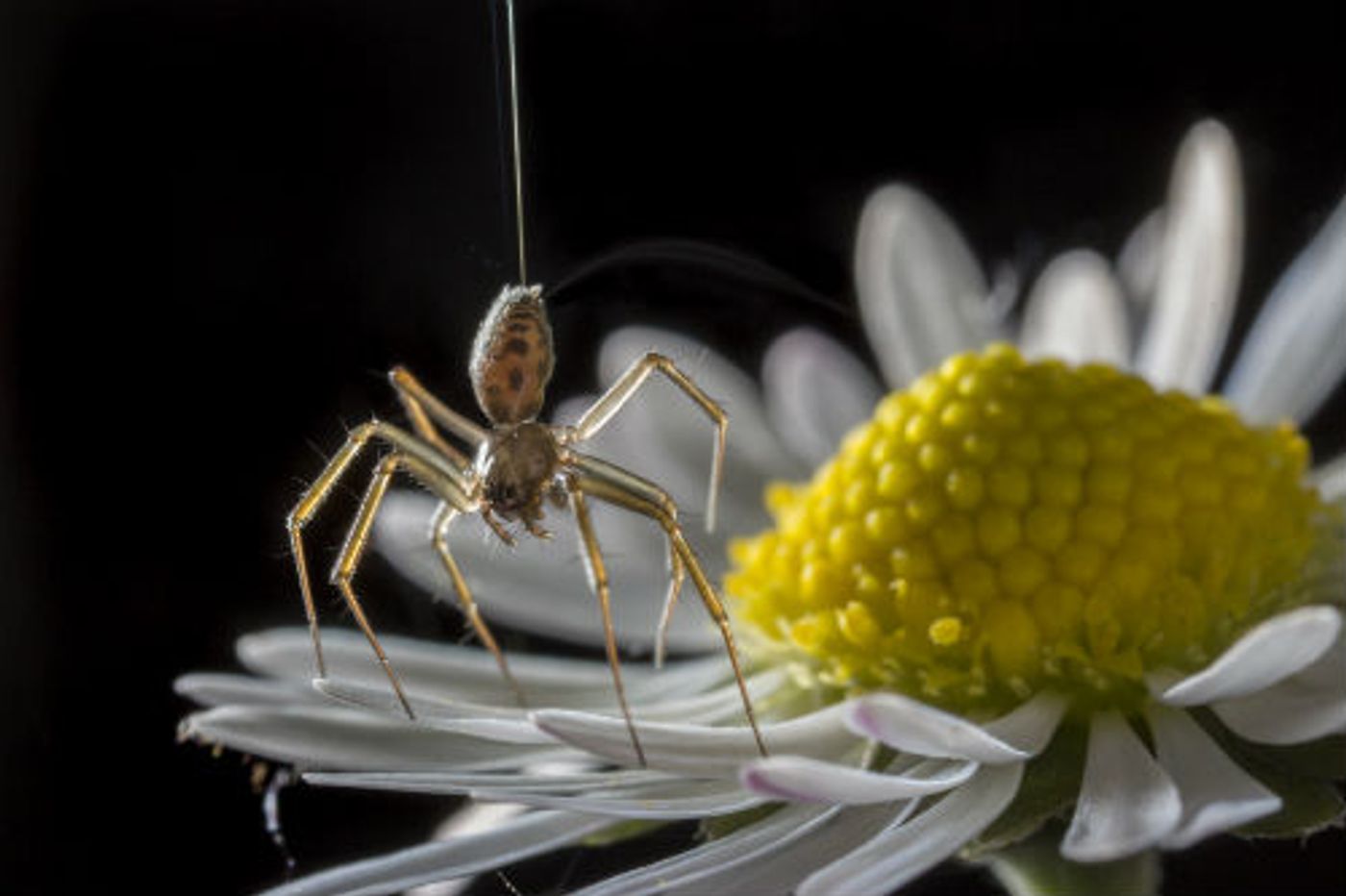Spiders May Use Electric Fields to Go 'Ballooning'
Spiders are known for having eight legs, but as it seems, these arthropods can sometimes fly using a technique known to the scientific community as ‘ballooning.’
Image Credit: Michael Hutchinson
When a spider ‘balloons,’ it climbs to the top of a tall object when there’s a mild wind and then spurts out a few feet of silk strands. These strands are then believed to be captured by the wind, which pulls the spider from its solid surface and carries it through the air. Think of it like flying a kite, but with a spider instead of a kite.
While scientists know of ballooning, the actual mechanisms responsible for this rather peculiar behavior are inadequately understood. Confusion is further fueled by the fact that some spiders go ballooning when there’s hardly any wind at all. For all intents and purposes, this shouldn’t be possible; right?
A new study published in the journal Current Biology by University of Bristol researchers seems to deliver some much-needed insight into the matter.
As it would seem, electric fields could be the key to a spider’s ballooning capabilities when there isn’t any discernable wind present.
"Many spiders balloon using multiple strands of silk that splay out in a fan-like shape, which suggests that there must be a repelling electrostatic force involved," study lead researcher Dr. Erica Morley explains.
Related: 100 million-year-old tailed spider fossil baffles scientists
Many ballooning spiders are observed ‘testing’ the air with their leg(s) before letting their silk strands loose. But if there was no wind to speak of, then why would the spider attempt to go flying?
The study looks at atmospheric electrostatic forces as a potential trigger for this behavior, in addition to being a supporting force for it. This, of course, suggests that spiders can sense electric fields just as many other organisms are thought to do.
"Current theories fail to predict patterns in spider ballooning using wind alone as the driver. Why is it that some days there are large numbers that take to the air, while other days no spiders will attempt to balloon at all? We wanted to find out whether there were other external forces as well as an aerodynamic drag that could trigger ballooning and what sensory system they might use to detect this stimulus."
Related: Are spiders really omnivores?
In testing, the researchers subjected ballooning spiders to electric fields in the lab without any wind. They noticed that spiders appeared to rise as the electric fields were turned on and that they’d sink down when the electric fields were turned off.
"Previously, drag forces from wind or thermals were thought responsible for this mode of dispersal, but we show that electric fields, at strengths found in the atmosphere, can trigger ballooning and provide lift in the absence of any air movement," Dr. Morley added.
"This means that electric fields, as well as drag, could provide the forces needed for spider ballooning dispersal in nature."
Given that spider silk is a great electric insulator, it seems plausible from the test results that electric fields may facilitate the ballooning behavior seen in spiders.
But the findings also raise questions about other organisms that behave in similar ways, and so the researchers intend to dig deeper as they investigate more in future studies.
It should be interesting to see what they might find.
Source: University of Bristol









